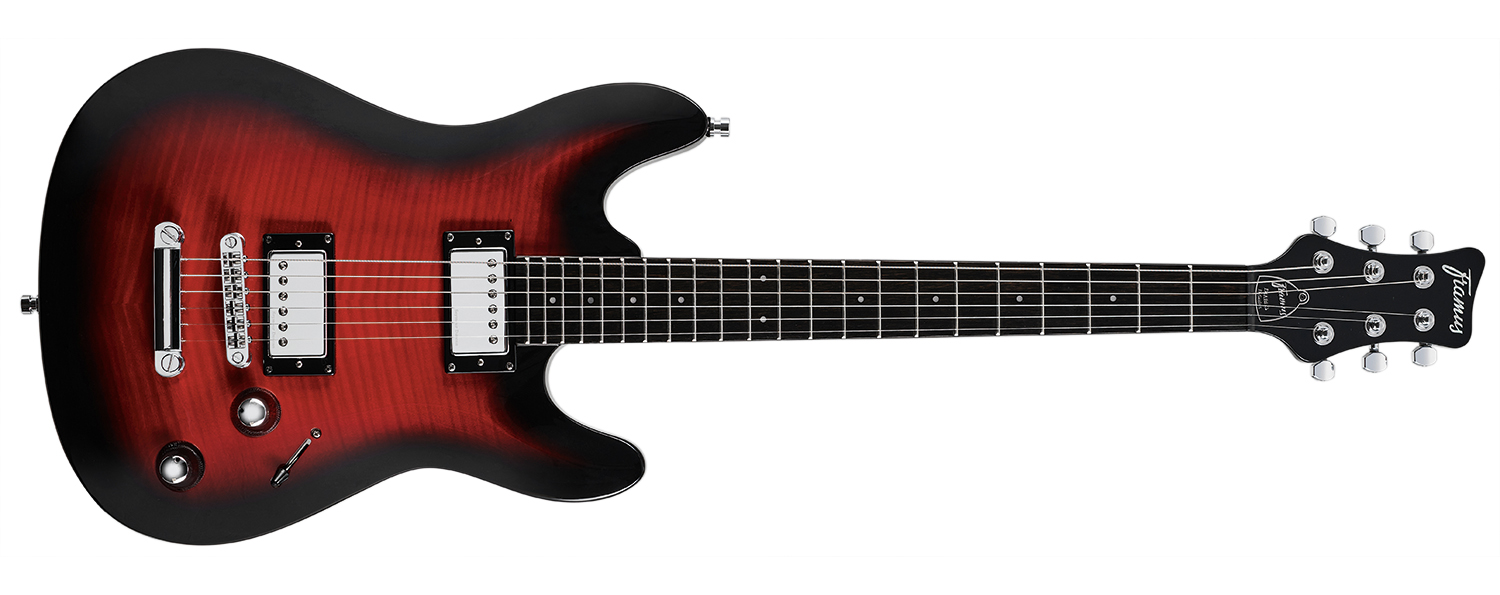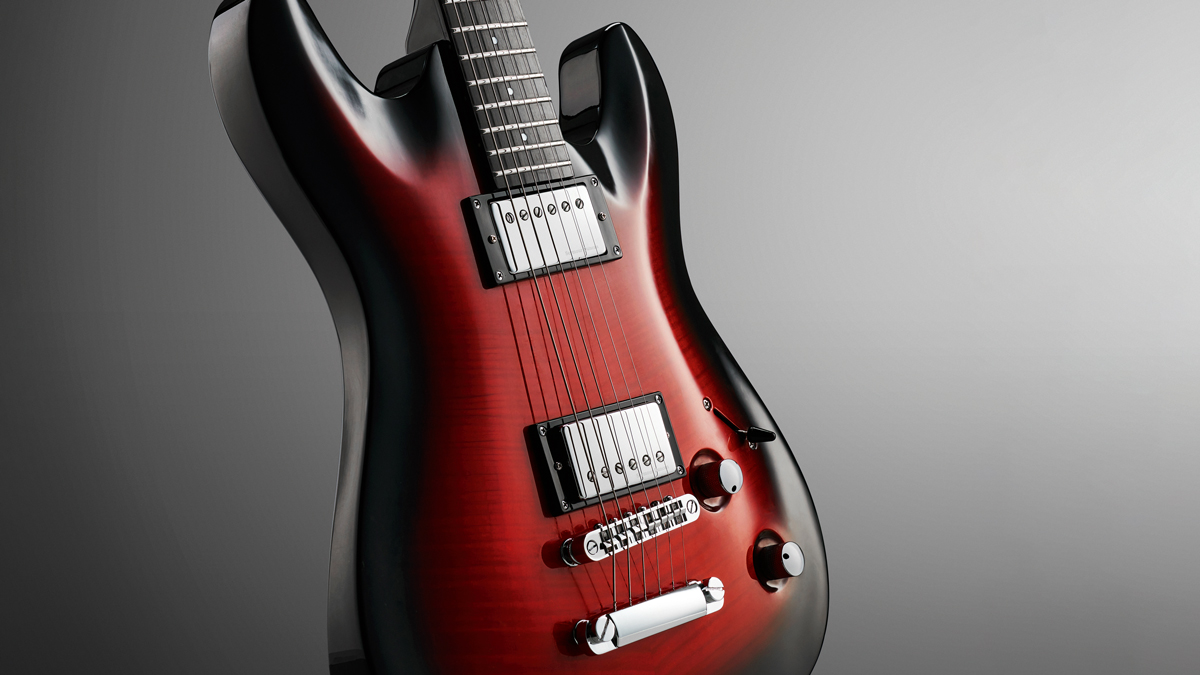Guitar World Verdict
A utilitarian rock machine that hits all the right notes – it's affordable, well-built, and has a pair of Seymour Duncan humbuckers that get the job done without any fuss.
Pros
- +
A superb option for rock players.
- +
Quality build and finish.
- +
Can't argue with the value.
Cons
- -
A coil-split would have expanded its tonal range.
You can trust Guitar World
From acoustic guitars that sound like electrics, to pedals that can emulate any guitar amp under the sun, there’s no limit to the options at our fingertips in 2022. But sometimes choice can be overwhelming, and there’s a lot to be said for the what-you-see-is-what-you-get approach. What you see here conforms to that concept – the D-Series Diablo Supreme from German guitar wizards, Framus.
The D-Series takes the design ethos of the brand’s guitars, played by the likes of Devin Townsend and William DuVall, and places them at a more affordable price point. There are a number of Diablos in the D-Series range: the Diablo Pro, Progressive and the best-spec’d Supreme that we have here.
As we were saying earlier, simplicity is at the heart of this guitar’s design, offering a classic double-cut body shape, a pair of Seymour Duncan humbuckers, 22 frets and a fixed bridge. On paper, it’s a meat ’n’ potatoes rocker, but as we’ve learned before, simple doesn’t need to mean ‘basic’.
Starting with the body, you get a traditional mix of a mahogany, topped with a tasty-looking AAAA maple veneer, in this case decked out in a transparent Burgundy Blackburst finish. The veneer is well matched, giving the guitar a pricier appearance.
The neck is set maple, fitted with a posh looking tigerstripe ebony, which despite the name is actually a pretty solid and dark example on our review model. There are some finishing touches, too, including the Warwick (Framus’s parent brand) security strap locks, a graphite nut, easy-access cavity cover and sleekly recessed controls.

In use, it’s fair to say there are no surprises here. It’s a utilitarian rock machine: the combination of the speedy but still substantial neck, ebony ’board, jumbo nickel silver frets and medium-level action make it a smooth player.
The fret size and finish mean that bends slide without friction, giving you a glassy feel as you go. The back of the neck is glossed, which may or may not float your boat, but we didn’t experience too much of the ‘tack’ that you sometimes get with a finished neck.
Onto the sounds, then. Those covered Seymour Duncans are actually the timeless pairing of an SH-1 in the neck position, and an SH-4 in the bridge. Or, to put it in street terms, a ’59 & a JB.
These two work together with the ’59 offering a scoopy clarity, with enough body to make sure you don’t get buried, but without the low-end heft of some neck buckers. It’s met by the extra cut of the JB, offering thick, mid-rich tones with some extra bite. Here, they conform to tradition, offering a set of tones that is capable of covering the rock playing field with ease.
The master volume/tone layout and lack of a coil split could be limiting to some, but there’s not a lot to fault with this Framus. It’s entered the mid-priced battleground, and it holds its own very well, offering an alternative to some of the more obvious ‘bigger’ brands.
Specs
- PRICE: $759/£719
- BODY: Mahogany with maple veneer
- NECK: Maple
- SCALE: 25.5”
- FINGERBOARD: Tigerstripe ebony
- FRETS: 22
- PICKUPS: Seymour Duncan SH-1 (neck), SH-4 (bridge)
- CONTROLS: Master volume, master tone, three-way switch
- HARDWARE: Tune-O-Matic bridge, Framus tuners
- LEFT-HANDED: Yes (Nirvana Black Transparent only)
- FINISH: Burgundy Blackburst High Polish, Nirvana Black Transparent HP, Bleached Ocean Blue Burst HP
- CONTACT: Framus

Stuart has been working for guitar publications since 2008, beginning his career as Reviews Editor for Total Guitar before becoming Editor for six years. During this time, he and the team brought the magazine into the modern age with digital editions, a Youtube channel and the Apple chart-bothering Total Guitar Podcast. Stuart has also served as a freelance writer for Guitar World, Guitarist and MusicRadar reviewing hundreds of products spanning everything from acoustic guitars to valve amps, modelers and plugins. When not spouting his opinions on the best new gear, Stuart has been reminded on many occasions that the 'never meet your heroes' rule is entirely wrong, clocking-up interviews with the likes of Eddie Van Halen, Foo Fighters, Green Day and many, many more. If he's not playing the guitar, you'll likely find Stuart behind the kit playing Valerie to newlyweds.
“It holds its own purely as a playable guitar. It’s really cool for the traveling musician – you can bring it on a flight and it fits beneath the seat”: Why Steve Stevens put his name to a foldable guitar
“Finely tuned instruments with effortless playability and one of the best vibratos there is”: PRS Standard 24 Satin and S2 Standard 24 Satin review











